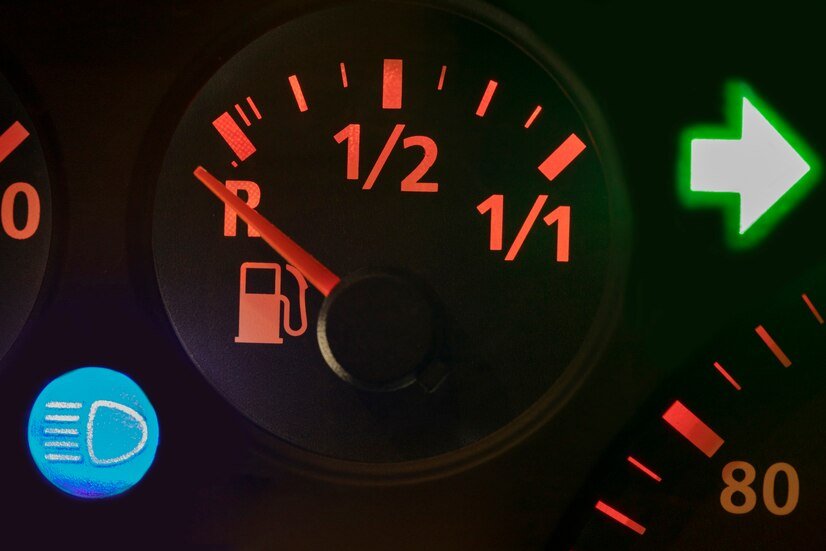Low oil pressure at idle is a common issue that car owners might encounter. While your vehicle’s engine oil plays a critical role in lubricating components and preventing wear, a drop in oil pressure can lead to serious engine damage if not addressed promptly. It’s essential to understand the reasons behind low oil pressure at idle, the signs to look out for, and the best ways to address the problem.
In this article, we’ll explore the causes of low oil pressure at idle, how to recognize the symptoms, and the steps you can take to resolve the issue before it escalates into a major repair problem.
What is Low Oil Pressure?
Oil pressure is the force generated by the oil pump to circulate engine oil throughout the engine. It ensures that engine parts, such as pistons, camshafts, and bearings, remain lubricated and cool. When the oil pressure drops, it can cause friction, leading to engine overheating and, in severe cases, complete engine failure.
Low oil pressure is typically a problem when the vehicle is idling, as this is when the engine operates at lower RPMs (revolutions per minute), which can affect oil flow. However, low oil pressure can also occur while driving, though it’s less common.
Causes of Low Oil Pressure at Idle
There are several reasons why low oil pressure may occur at idle. Understanding these causes can help you diagnose the problem and take the necessary steps to prevent further damage to your engine.
1. Low Oil Levels
One of the simplest and most common causes of low oil pressure at idle is low oil levels. If your engine doesn’t have enough oil, it can’t maintain proper pressure, especially when the engine is idling at lower RPMs. This leads to a drop in oil pressure readings.
Solution: Check your oil levels regularly and top up if necessary. If you’re consistently running low on oil, it could indicate a leak or other internal engine issues that need attention.
2. Worn Engine Components
Over time, engine parts such as bearings, pistons, and the oil pump can wear out. This wear increases the space between components, which reduces the ability of the oil to maintain pressure. When these components begin to degrade, oil pressure can fluctuate or drop, especially at idle.
Solution: If you suspect engine wear, consult a mechanic to perform a thorough inspection. Replacing worn parts early on can help prevent more significant damage and reduce the risk of engine failure.
3. Oil Pump Failure
The oil pump is responsible for circulating oil throughout the engine. If the oil pump malfunctions, it can’t maintain the necessary pressure for proper lubrication, especially at low engine speeds like idle. This could lead to low oil pressure warnings or even engine knocking.
Solution: If the oil pump is the issue, it may need to be repaired or replaced. This is a complex job that requires professional assistance.
4. Oil Viscosity Issues
Oil viscosity refers to the thickness or thinness of the oil. If the oil is too thin (low viscosity), it may not generate enough pressure to properly lubricate the engine components. Cold weather can also make oil thicker and reduce flow, but once the engine warms up, the oil should return to its normal viscosity.
Solution: Check the oil type and make sure it’s suitable for your vehicle and the local climate conditions. For instance, using the wrong oil for winter or hot summer months can result in improper oil viscosity, leading to low oil pressure at idle.
5. Clogged Oil Filter
The oil filter removes contaminants from the oil to keep the engine clean. If the oil filter becomes clogged with debris or dirt, it can obstruct the flow of oil, leading to a drop in oil pressure. This problem is often worse at idle when the oil flow is already slower than when driving.
Solution: Replace the oil filter regularly during routine oil changes. A clean oil filter ensures the engine oil flows freely and maintains consistent pressure.
6. Faulty Oil Pressure Sensor
Sometimes the issue isn’t actually low oil pressure, but rather a faulty sensor that gives incorrect readings. A malfunctioning oil pressure sensor can cause the dashboard warning light to come on, even if the oil pressure is normal.
Solution: Have your oil pressure sensor tested and replaced if necessary. This is a relatively inexpensive fix and will give you peace of mind that the sensor is functioning correctly.
7. Engine Oil Leaks
Engine oil leaks can lead to low oil levels, which can cause low oil pressure. These leaks may be visible or may occur internally, making it more difficult to spot the issue. Common places for leaks include the oil pan gasket, valve cover gaskets, and seals.
Solution: Inspect your engine for oil leaks and address them immediately. Depending on the severity of the leak, you may need to replace gaskets, seals, or other components.
Symptoms of Low Oil Pressure at Idle
Recognizing the symptoms of low oil pressure at idle can help you take action before the problem becomes more serious. The following signs may indicate low oil pressure:
1. Oil Pressure Warning Light
Most modern vehicles are equipped with an oil pressure warning light on the dashboard. If this light comes on while your car is idling, it’s a clear sign that the oil pressure is too low.
2. Engine Noise
Low oil pressure can cause engine parts to rub together, creating a knocking or ticking noise. If you notice unusual engine noise, it may be time to check your oil pressure.
3. Fluctuating Oil Pressure Gauge
Some vehicles have an oil pressure gauge that shows real-time readings. If the gauge fluctuates or shows low pressure at idle, it may indicate an issue with the oil system.
4. Poor Engine Performance
Low oil pressure can lead to poor engine performance, such as misfires, sluggish acceleration, or overheating. If you experience any of these symptoms, it’s important to address the issue as soon as possible.
5. Burning Oil Smell
If your engine is running low on oil, it could overheat, causing the oil to burn. This could result in a burning smell coming from the engine compartment, which is a sign of a potential oil pressure problem.
How to Fix Low Oil Pressure at Idle
Now that you know what causes low oil pressure at idle and the symptoms to look for, let’s explore the steps you can take to fix the issue.
1. Check Oil Levels and Top Up
The first step is always to check the oil level. If the oil is low, top it up with the correct type and grade of oil. If you find that you need to add oil frequently, there could be an underlying issue, such as an oil leak, that needs to be addressed.
2. Change the Oil and Filter
If the oil is old or contaminated, it’s important to change both the oil and the oil filter. Old oil can lose its viscosity, which can lead to low oil pressure, especially at idle.
3. Replace the Oil Pump (If Necessary)
If you suspect the oil pump is malfunctioning, it may need to be replaced. This is a more involved repair, so you should consult a mechanic if you suspect the oil pump is the cause of the low oil pressure.
4. Replace the Oil Pressure Sensor
If your oil pressure sensor is faulty, replacing it should fix any false readings and restore accurate oil pressure monitoring.
5. Repair Oil Leaks
If you find any oil leaks, address them immediately to prevent further oil loss. Fixing the leak will help maintain the proper oil level and pressure.
Conclusion
Low oil pressure at idle is an issue that should never be ignored, as it can lead to severe engine damage if not addressed in a timely manner. Regularly checking your oil levels, using the right type of oil, and performing routine maintenance are key steps to preventing low oil pressure problems. If you experience any symptoms such as warning lights, engine noise, or fluctuating pressure, it’s important to take immediate action by diagnosing the issue and seeking professional assistance when necessary.
By understanding the causes of low oil pressure at idle and knowing the appropriate steps to take, you can help ensure that your vehicle remains in good condition and avoid costly repairs in the future.
Was this helpful? If so, please keep browsing our site to find more useful information!
FAQs
Can low oil pressure at idle cause engine damage?
Yes, low oil pressure at idle can cause engine components to wear out due to lack of lubrication, potentially leading to severe engine damage if not addressed.
How do I know if my oil pump is failing?
If your oil pressure drops significantly at idle, or the engine makes knocking sounds, the oil pump could be failing. A mechanic can help diagnose and replace it if necessary.
Can I drive with low oil pressure?
Driving with low oil pressure is not recommended, as it can cause significant engine damage. If you notice low oil pressure, it’s best to stop driving and address the issue.
What oil should I use to prevent low oil pressure?
Ensure you use the correct oil viscosity recommended by your vehicle’s manufacturer. Using the wrong oil for your car’s specific needs can lead to issues like low oil pressure, especially at idle.
How often should I check my oil pressure?
It’s a good practice to check your oil levels and pressure at least once a month or before long trips to ensure your engine is running smoothly and efficiently.











